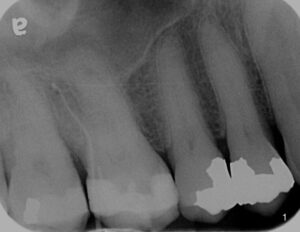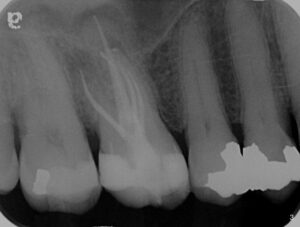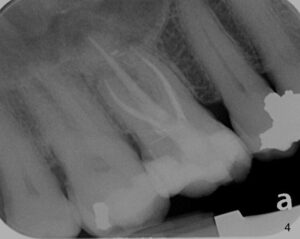Root canal treatment is often thought of as an extremely painful dental appointment. With several common myths about root canal treatments, and someone who may be unfamiliar with the procedure could possibly fear it. To help you better understand, we will walk you through these myths to reveal the truth behind root canal treatments, and perhaps you will see the procedure should not be feared at all!
Myth #1 ROOT CANAL TREATMENT IS PAINFUL.
TRUTH: Root canal treatment does not cause pain, it in fact it results in the exact opposite – it relieves pain!
Root canal treatment will relieve your pain while saving your natural tooth. The treatment will begin with a local anesthetic, and once the area receiving the root canal treatment is numbed, the procedure will feel similar to a filling with the only difference being the time it takes to complete.
Myth #2 ROOT CANAL TREATMENTS REQUIRE MANY TRIPS TO THE DENTIST.
TRUTH: Most root canal treatments are completed in one visit to the dentist!
Due to cutting-edge technology and the latest techniques practiced, the majority of root canal treatments are performed in a single dental appointment.
Myth #3 IF THE TOOTH DOES NOT HURT, THERE IS NO NEED FOR THE ROOT CANAL TREATMENT.
TRUTH: Root canal treatments may be required to save the natural tooth even in the absence of pain.
Everyone’s case is different, but there are some clinical situations where a tooth will require a root canal treatment even though the you may not feel any pain. Your dentist will asses the area, and if the pulp (the centre of the tooth that contains the nerves, connective tissues, and blood vessels) is infected or damaged, a root canal treatment will be required to save the tooth.
Myth #4 ROOT CANAL TREATMENTS CAUSE ILLNESS.
TRUTH: There is no valid scientific evidence linking root canal treatments to diseases elsewhere in the body.
Current studies show root canal treatments are safe and effective procedures.
Myth #5 PREGNANT WOMEN CAN NOT HAVE A ROOT CANAL TREATMENT.
TRUTH: Root canal treatment is generally considered safe during pregnancy.
Every pregnancy will be different; therefore, it is important to check with your doctor and dentist for guidance along the way. Be sure to inform your dentist of your pregnancy prior to your appointment and they will be sure to take any and all precautions necessary.
Myth #6 EVEN WITH A ROOT CANAL TREATMENT THE TOOTH WILL COME OUT EVENTUALLY.
TRUTH: Root canal treatments are meant to last a lifetime!
Your tooth after a root canal treatment should last a lifetime. Ensuring your tooth to remain healthy after a root canal treatment will depend on maintaining proper oral hygiene and regular visits to your dentist.
Myth #7 FAILED ROOT CANALS NEED TO BE EXTRACTED.
TRUTH: Even though a root canal treatment is considered to have a high success rate, there are some cases where a failure is encountered.
If you find yourself in this position, the next step would be an endodontic re-treatment under an operating microscope. Should this procedure not be an option, a limited number of cases may require a root end surgery, also known as apicoectomy. These two options are the preferred alternative treatments to a tooth extraction as the goal is always to save the natural tooth.
Myth #8 EXTRACTING THE TOOTH IS BETTER THAN RECEIVING A ROOT CANAL TREATMENT.
TRUTH: Your natural tooth is very important for functions such as chewing and speaking.
There are several options available for missing teeth, such as dental implants, fixed dental bridges, and removable dentures; however, these alternatives can require longer treatment time and will be more expensive than saving your natural tooth with a root canal treatment.
IN SUMMARY: Root canal treatment should be thought of as a positive experience. There are many myths that may cause fear of the treatment, but after reading this article you can see that a root canal treatment should not be feared. It is a common procedure to save your natural tooth!
The above case shows a required a root canal treatment due to chronic apical periodontitis with sinus tract on a tooth that has a long lasting large restoration. Treatment was preformed in a single visit being able to preform the root canal treatment in-spite of calcific root canal systems under magnification using an operating microscope. As you can see in the progression throughout the x-rays the natural tooth was saved, being functional and asymptomatic.

Dr. Daniela Bololoi DDS
Member of:
INTERNATIONAL ASSOCIATION OF DENTAL TRUMATOLOGY
CANADIAN ACADEMY OF ENDODONTICS
AMERICAN ASSOCIATION OF ENDODONTISTS





